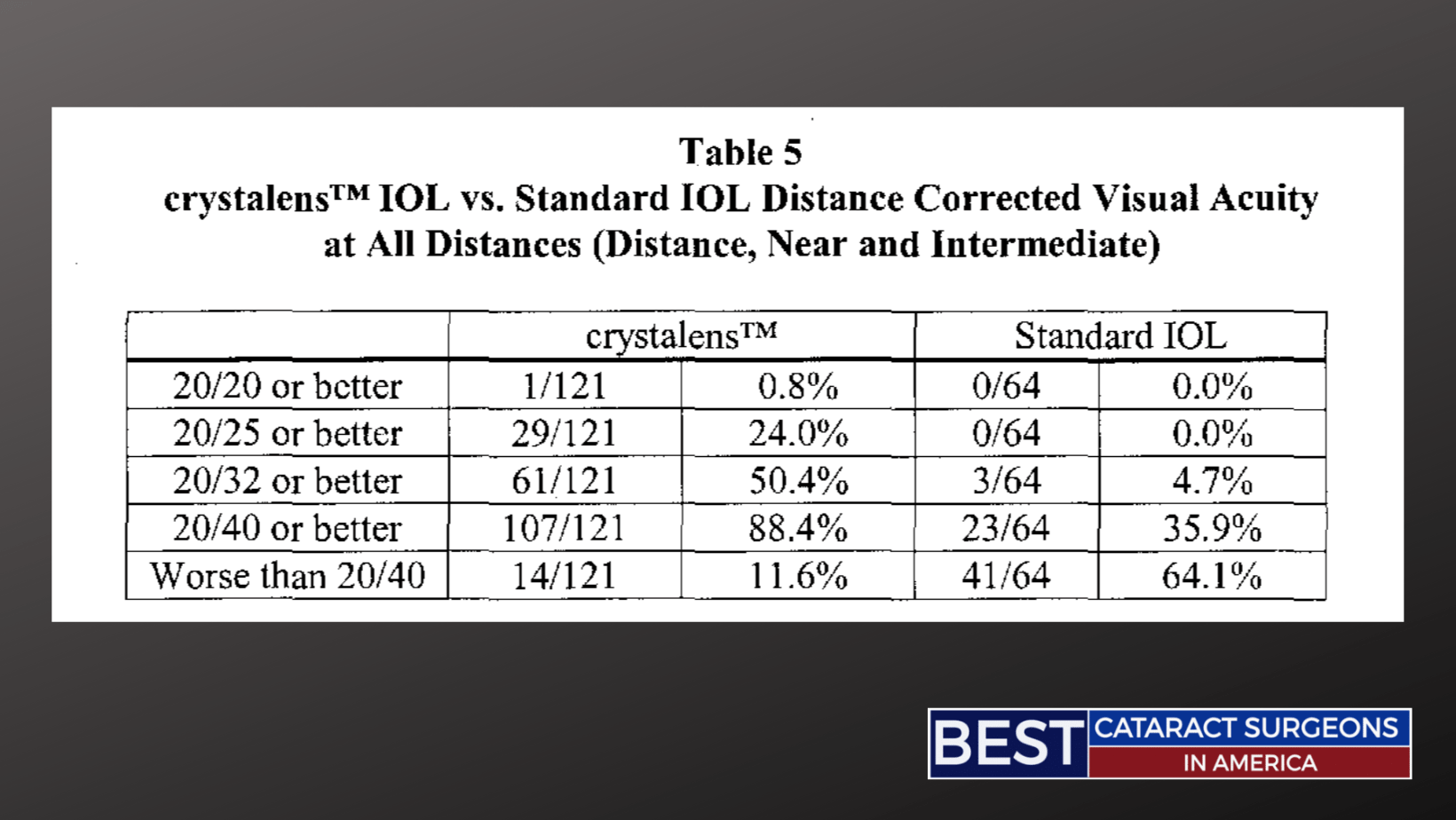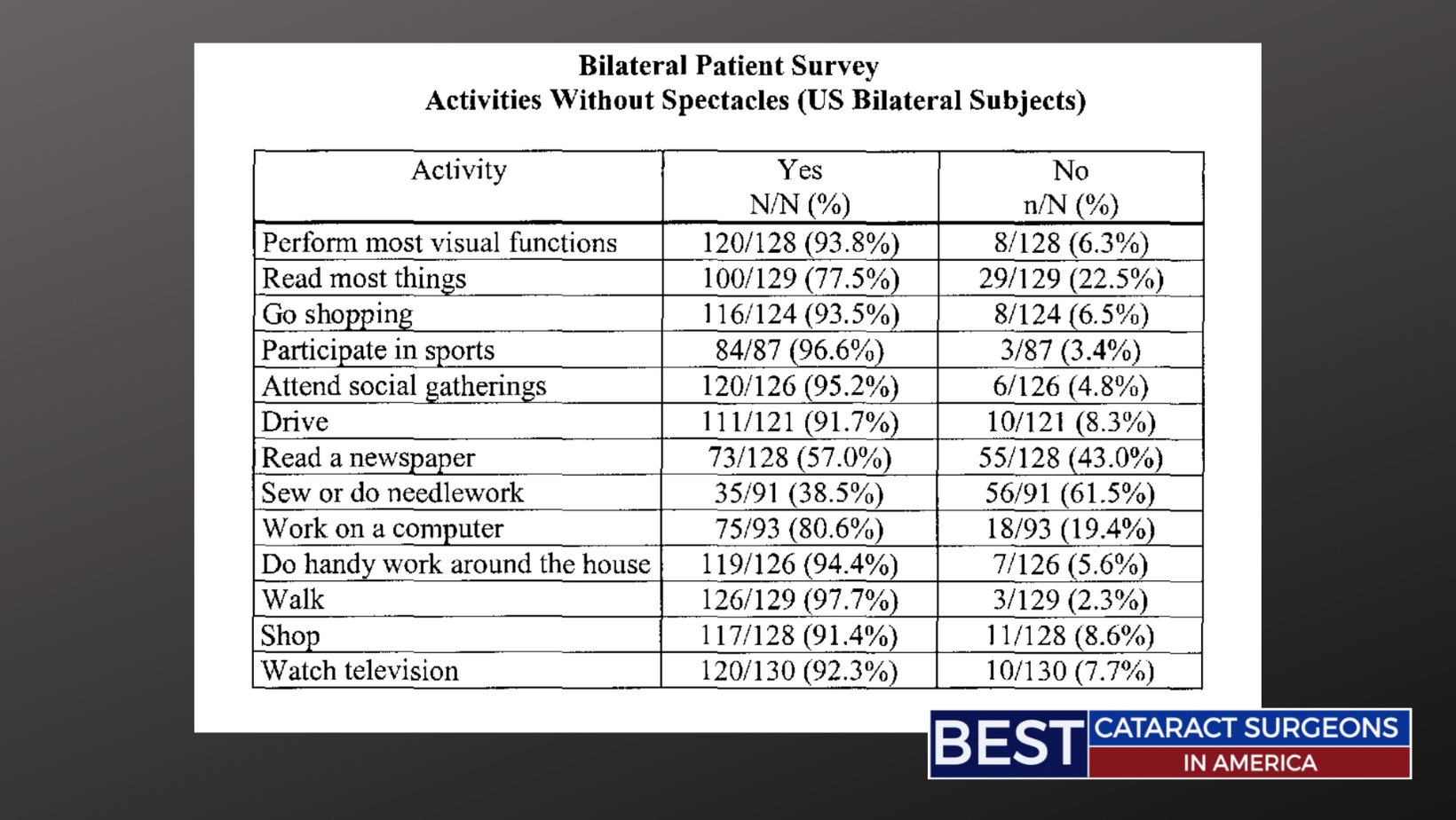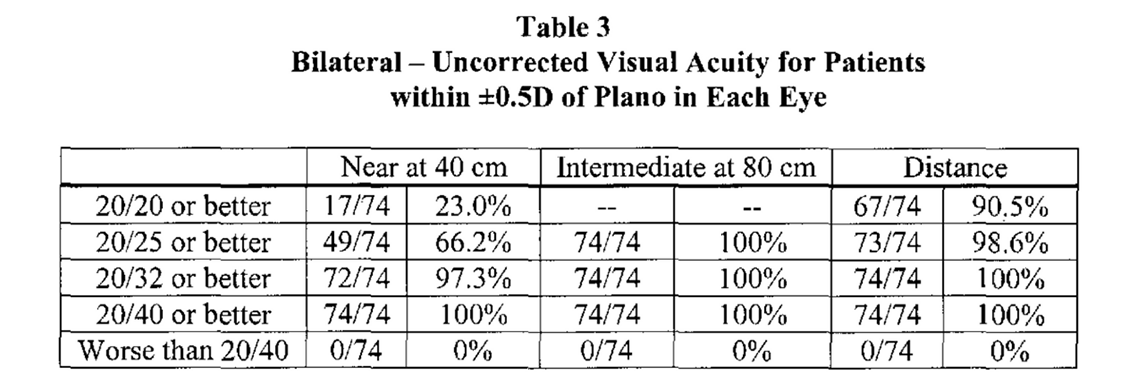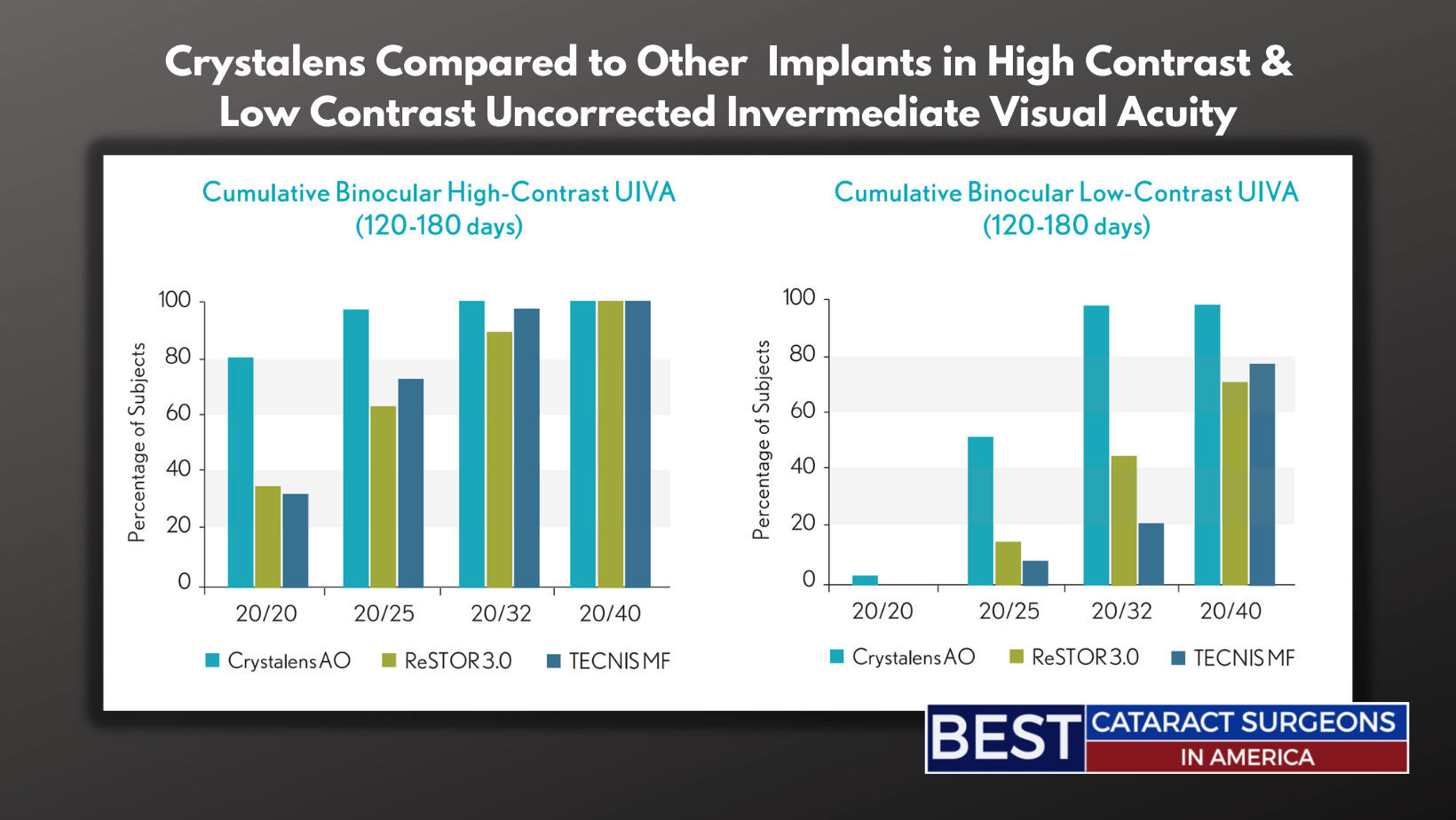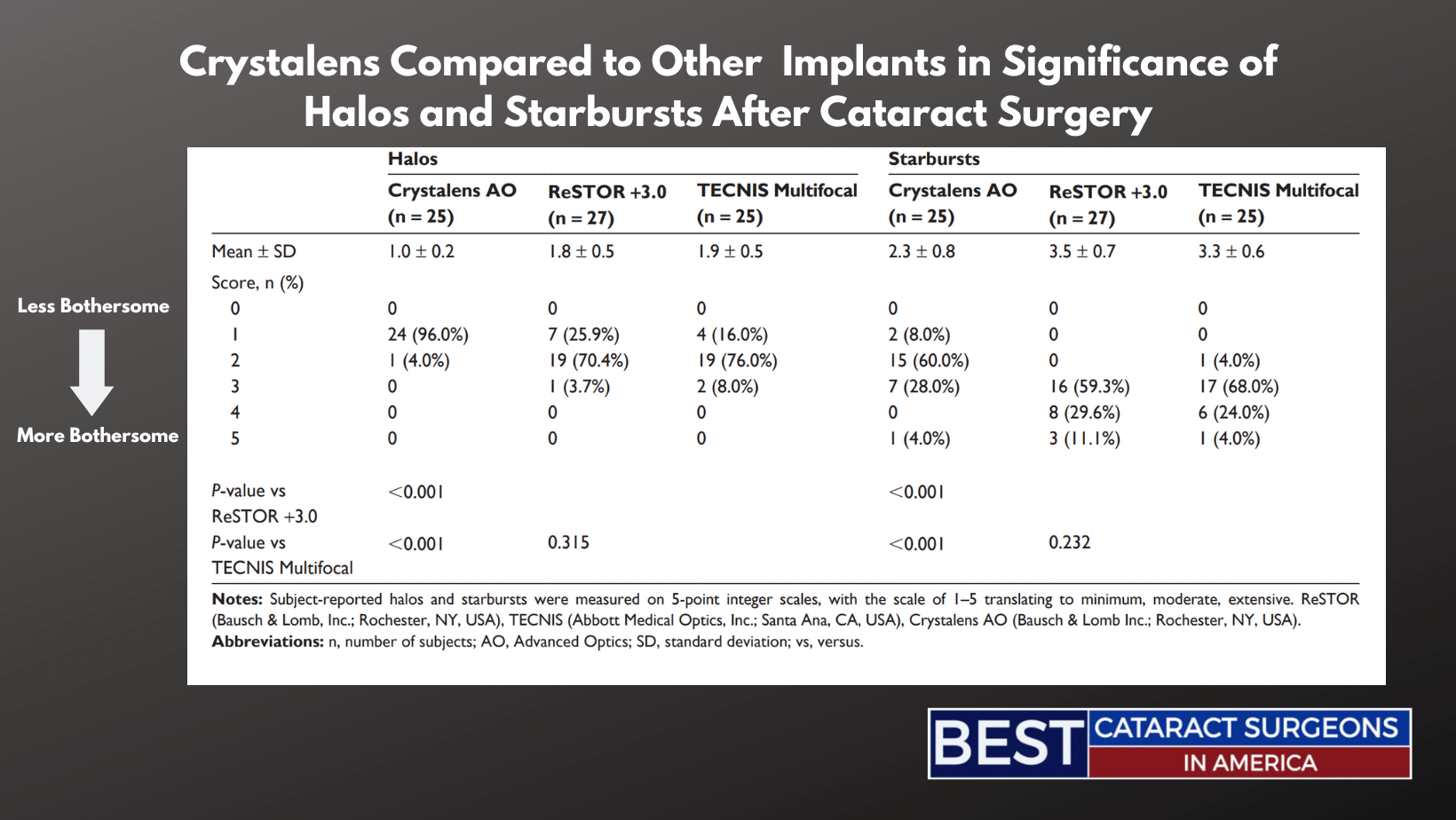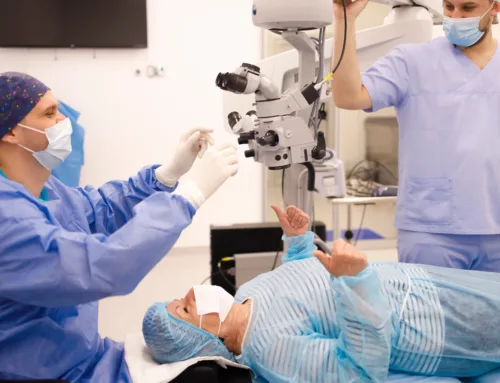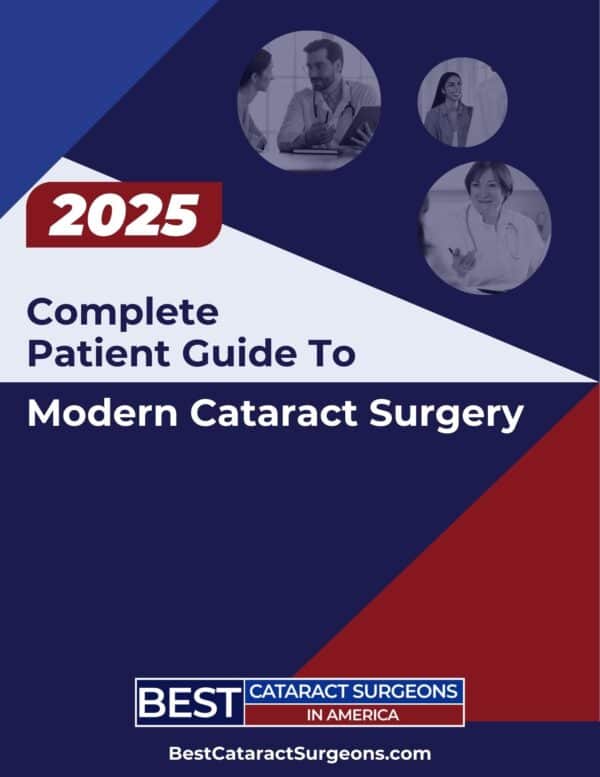What is the Crystalens IOL?
The Crystalens is a type of advanced technology lens implant used in modern cataract surgery. The Crystalens is designed to deliver patients an extended range of vision to achieve freedom from glasses over a broader range than traditional monofocal lens implants.
The Crystalens achieves this by shifting forward or backward within the eye, depending on whether you are trying to focus on a distance or a near target.
Let’s discuss basic lens implants first, and then we’ll circle back to review how the Crystalens works in more detail.
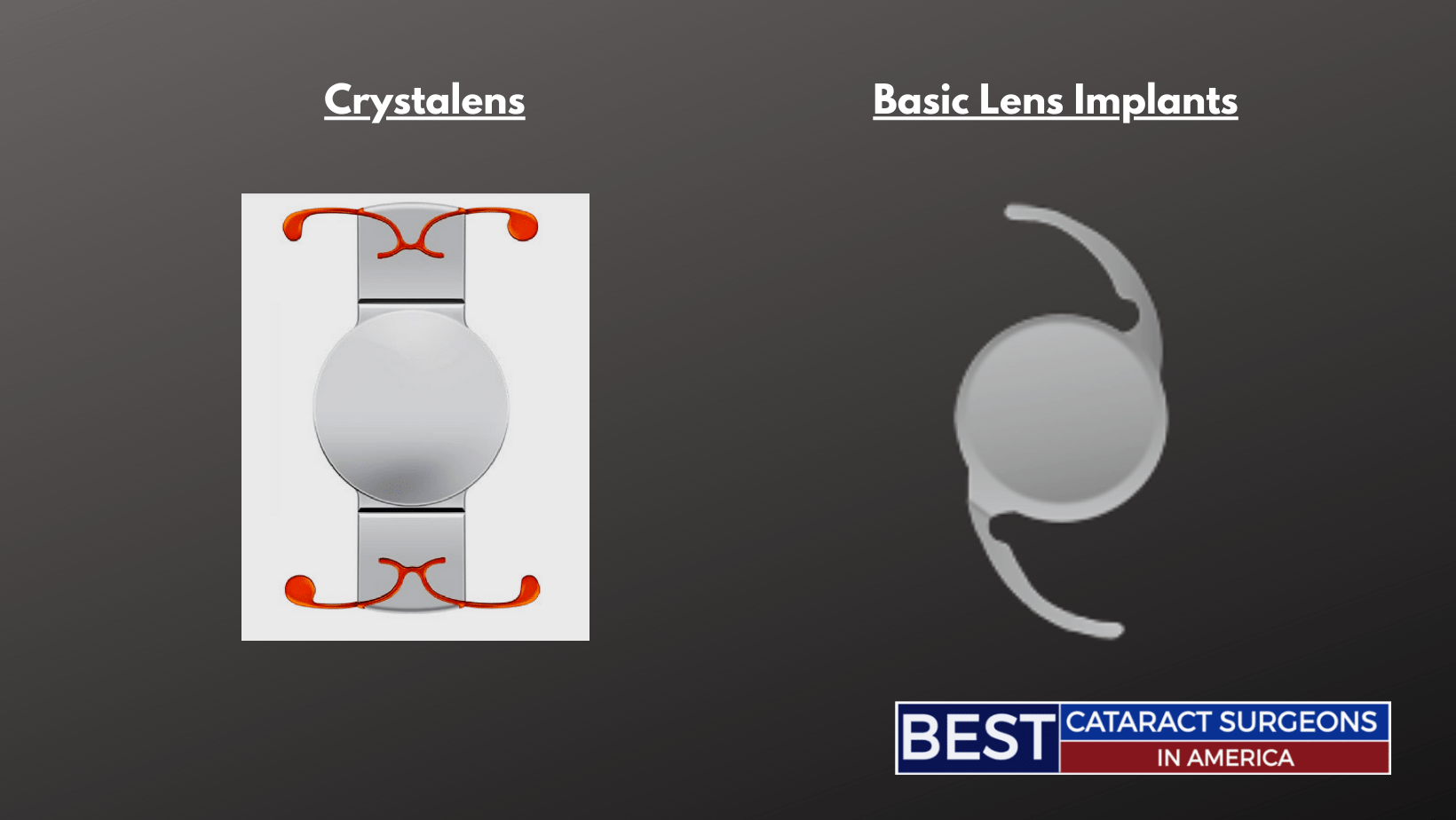
How do Basic Lens Implants Work?
Basic lens implants have one focal point and do not correct astigmatism. With a basic lens implant, astigmatism is not managed, and patients should expect to require bifocals or trifocals after their surgery.
Basic lens implants also do not correct presbyopia, which is the need for reading glasses.
When we’re younger than 50, our natural lens is flexible, allowing you to have a range of vision without requiring bifocals or reading glasses. When the natural lens stiffens with age, this flexibility, and range of vision, is lost.
Basic lens implants have one focal point, which is fixed. This results in patients needing a separate prescription for distance and near vision, which is most commonly corrected with bifocal or trifocal glasses.
How is the Crystalens Different Than Basic Lens Implants
One of the great benefits of modern cataract surgery is the ability to be free from glasses. There are several lens implants that can help patients achieve this independence from glasses.
Some of these lenses split light, a process called diffraction, to achieve this range of vision. Others use advanced optics, called spherical aberration.
The Crystalens is the only FDA approved accommodating lens implant available in the United States. The FDA compared the Crystalens to a basic lens implant, and found that the Crystalens provided much better near and intermediate range vision.
Table 5 shows the unilateral results for the subset of subjects implanted with the crystalens™ IOL compared to the unilateral results for subjects with the standard monofocal lOL (these were the subjects in the contrast sensitivity substudy). Distance corrected visual acuities of 20/40 or better at near, intermediate and distance 3-6 months or more after surgery were reported in 88.4% of the subjects with the crystalens™ IOL and 35.9% of the subjects implanted with the standard monofocal IOL. Source: FDA “Summary of Safety and Effectiveness Data” for the Crystalens
The Crystalens shifts its position within the eye based on whether your eye is focused on a distance target or a near target. Because the Crystalens does not have to split up light, it preserves excellent contrast sensitivity, and does not result in the glare or halos which can be caused by other lens implants.
How do I know if I am a Candidate for a Crystalens IOL?
Determining whether you are a good candidate should be done via a comprehensive eye exam with your eye doctor.
There is no best “one-size-fits-all” lens implant. The Crystalens is an excellent lens implant for suitable patients in the hands of an experienced cataract surgeon.
What are the Benefits of the Crystalens IOL?
The unique accommodating mechanism of the Crystalens provides patients with distance, intermediate, and some near vision without the unwanted side effects of glare, halos, and starbursts.
Let’s discuss some of these features in more detail.
Excellent distance and intermediate vision
It’s expected that modern advanced technology lens implants deliver excellent distance visual acuity. But what about intermediate range vision?
So much of our lives are spent in the range from the cell phone to the computer screen. Whether we are looking at the shelf at the grocery store, items on the kitchen counter top, the dashboard in the care, or the computer screen, so much of our lives are spent using our vision in this range.
In the FDA study, the vast majority of patients were able to perform most visual functions, including “reading most things”, participating in sports, go shopping, and work on a computer without glasses.
Source: FDA “Summary of Safety and Effectiveness Data” for the Crystalens
In the FDA study, they looked at the intermediate and near visual acuity of patients who had the Crystalens close to the intended distance target.
Table 3 shows the uncorrected visual acuity for a subset of the bilateral subjects in the study that were within ±0.5D of plano in each eye. Uncorrected visual acuities of20/32 or better at near, distance or intermediate one year after surgery improved to 97.3% of the subjects when within 0.5D of plano in each eye. Source: FDA “Summary of Safety and Effectiveness Data” for the Crystalens
Astigmatism correction
The Crystalens platform is available in a toric implant version which is called “Trulign”, which will allow your surgeon to correct your astigmatism at the time of surgery. Depending on the measurements of your corneal astigmatism, some patients will benefit from having this astigmatism correction built into the lens implant, while other patients may not. This is a decision for your surgeon to make based on the preoperative measurements of your eye.
Excellent contrast sensitivity
When we read letters on the eye chart at the doctors office, the letters are typically dark black on a white background. The real world is not only black and white, rather, it’s made up of colors and all of the shades of gray in between.
Contrast sensitivity has to do with the ability to not only see small details at a distance, but to do so even when the colors are these shades of gray in between.
Certain lens implants compromise on contrast sensitivity to achieve their benefits of a larger range of vision. They do this by splitting light in a process called diffraction. This splitting of light means that with this type of diffractive multifocal implants, you may give up some contrast sensitivity in exchange for a larger range of vision.
With the Crystalens, this compromise is not necessary. Instead of splitting light, the Crystalens is designed to shift its position inside the eye. This results in preserved excellent contrast sensitivity across an extended range of vision.
Crystalens Compared to Other Implants in High Contrast & Low Contrast Uncorrected Intermediate Visual Acuity. Source: Crystalens Marketing Materials
Because the Crystalens preserves excellent contrast sensitivity, it may be a great choice for some patients with conditions that can reduce contrast sensitivity, such as glaucoma, diabetic retinopathy, or macular degeneration.
For example, in a patient with mild to moderate glaucoma and cataracts, the glaucoma may be compromising contrast sensitivity, making diffractive multifocal implants a potentially risky choice. This reasoning is similar for patients with certainly severity levels of diabetes and cataracts, as well as macular degeneration and cataracts.
Clear nighttime vision
Night vision, particularly when driving, is of importance to many patients. In fact, difficulty with night driving caused by glare, haloes, and starbursts is one of the most common symptoms patients with cataracts have.
Some of the lens implants that are designed to give an extended range of vision cause unwanted glare, haloes, and starbursts. For most patients, these symptoms are mild; however, for some patients the symptoms can be more bothersome.
Because the Crystalens does not diffract, or scatter, light to accomplish its increased range of vision, these unwanted night vision symptoms have been shown to be less bothersome compared to other advanced technology lens implants.
Crystalens Compared to Other Implants in Significance of Halos and Starbursts After Cataract Surgery. Source: Ang R, Martinez G, Cruz E, Tiongson A, Dela Cruz A. Prospective evaluation of visual outcomes with three presbyopia-correcting intraocular lenses following cataract surgery. Clin Ophtalmol. 2013;7:1811-23
Summary
There you have it! We hope you found this review of the Crystalens helpful. This is an outstanding lens implant in the hands of an experienced surgeon.
As we often say, lens implants are not “one-size-fits-all”. There is no one lens implant that is the best for every patient. The choice of which lens implant is right for you should be based on a conversation with an experienced surgeon about the health of your eyes, which lens implants you are a candidate for, and what your goals are for after cataract surgery. By having a personalized conversation with a surgeon, you have the best chance of achieving a great outcome.







